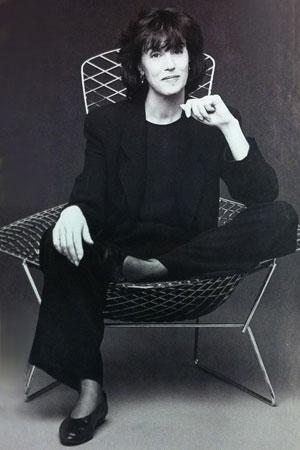Nora Ephron: We’ll Have What She Had
By • July 2, 2012 0 1781

In the wake of the death of Nora Ephron at the too-young age of 71 from a complication of acute myeloid leukemia June 26, they’ve been running the same clip from “When Harry Met Sally,” the great rom-com that starred Meg Ryan and Billy Crystal for which Ephron wrote the screenplay.
You know the one: Ryan explains and demonstrates to a skeptical Crystal that women do indeed fake orgasms, and here’s how we do it, to which a female diner at a nearby table says: “I’ll have what she’s having.”
It’s as if that line somehow defined Ephron’s life and career, but then, we’re in the let’s-go-to-the-video or YouTube era, so that accounts for it.
More difficult to account for and easier to admire is Ephron’s life and its attendant accomplishments. She was funny, smart, graceful, charming, loyal and always curious, with the gift of making the specifics of her life universal to ours. She had courage, sharp eyes and sometimes sharp words that hurt like pinpricks but opened our eyes. She had an eagerness to know, to share and to experience.
What I would say — and I’m a man (not that there’s anything wrong with that) — I wish I had what she had.
As it was, she left behind a lot of evidence of her qualities and her impact. She was a writer, after all, and writers never think to think they’ve written too much. Born of show business parents, she started out as a reporter, worked on now nearly extinct daily newspapers, wrote personal-styled essays for Ladies Home Journal and Esquire Magazine, a pairing you’re not likely to see in the same sentence again any time soon.
Ephron was keenly aware of who and what she was: a woman working in a man’s world, which was especially true when she turned her scribbling gifts to screenwriting, and seduced that Hollywood macho part of town into mush with her fierce friendliness, her interest in everything and everybody around her and an ability—very important in Hollywood—to turn out hits. So, there was “When Harry Met Sally,” about life-long friend who try to keep a friendship from turning into sex and love and romance; “You’ve Got Mail” and “Sleepless in Seattle,” two Tom Hanks and Meg Ryan romances that charmed the country. She wrote “Silkwood,” a gritty movie about whistle blower Karen Silkwood, directed by Mike Nichols. She wrote, most recently, “Julie and Julia,” about Julia Child, starring Meryl Streep.
And perhaps most heartfelt and anger-felt was “Heartburn,” a very thinly disguised novel about her marriage to Watergate-famous reporter and writer Carl Bernstein, who had the caddish misfortune to conduct an affair with the wife of the British Ambassador to the United States, Margaret Jay.
This would become a movie with Streep playing the herself role and Jack Nicholson as the husband. Much of it was filmed in and around Georgetown in various locations, including a hair salon which made old Georgetown giddy as all get-out.
Efron was, by and large, of the species New Yorker even if she did spend time in La La Land. It didn’t matter what it was, she would turn everything into writing gold of the most appealing kind. Her inspiration and heroine was Dorothy Parker, the acidic, sharply funny, extremely smart writer, reporter, short story and fiction writer and wit of the 1920s and 1930s who held her own among the male verbal jousters of New York’s Algonquin Club. Famously, she wrote an abbreviated and to-the-point review of Katharine Hepburn’s first stage effort thusly: “Miss Hepburn ran the emotional gamut from A to B.”
The other day, we were walking in the neighborhood and saw a woman walking a little white maltese dog. She was wagging her tail in friendly fashion. “What’s her name?” we asked. “Dottie,” the woman replied. “I named her after Dorothy Parker.” Dottie eyed me skeptically. I fully expect to see a beautiful, skeptical, smart and funny little pooch, named Nora in neighborhoods across the country very soon. Or at least a statue. Or at least a movie. Starring Meryl Streep, saying, “I’ll have what she’s having.”

